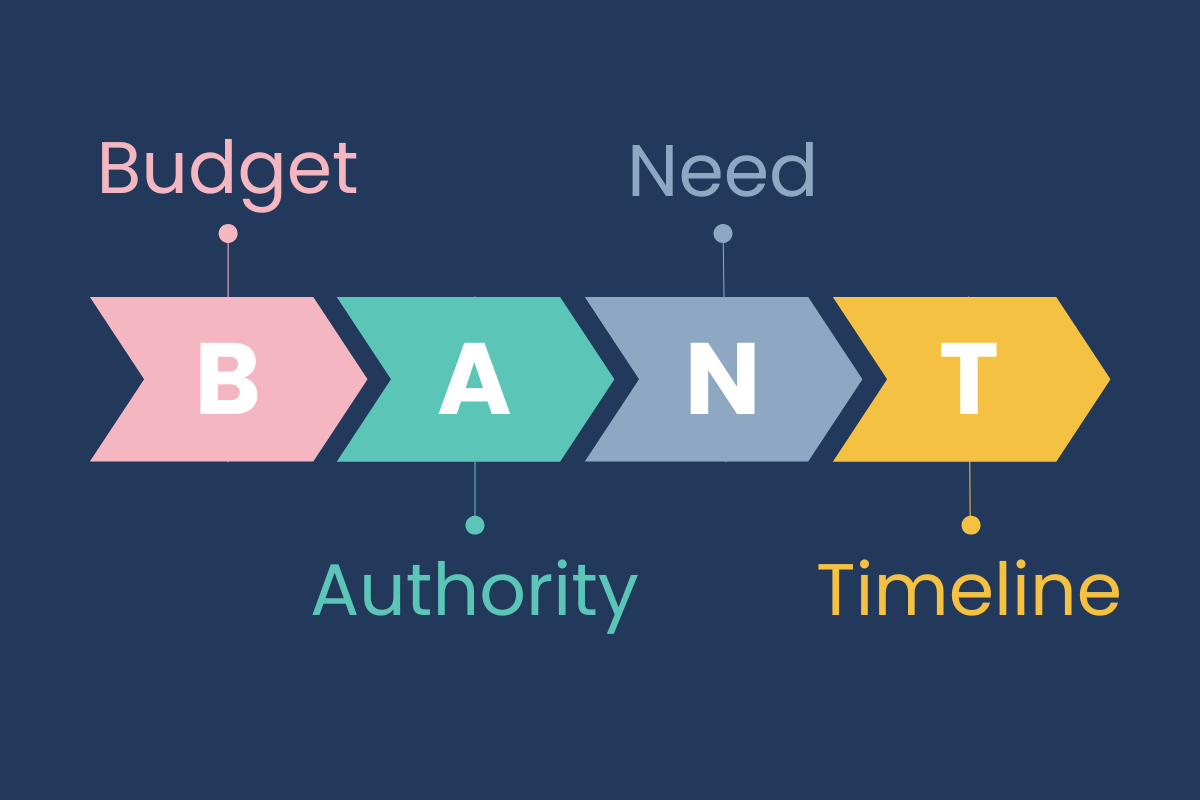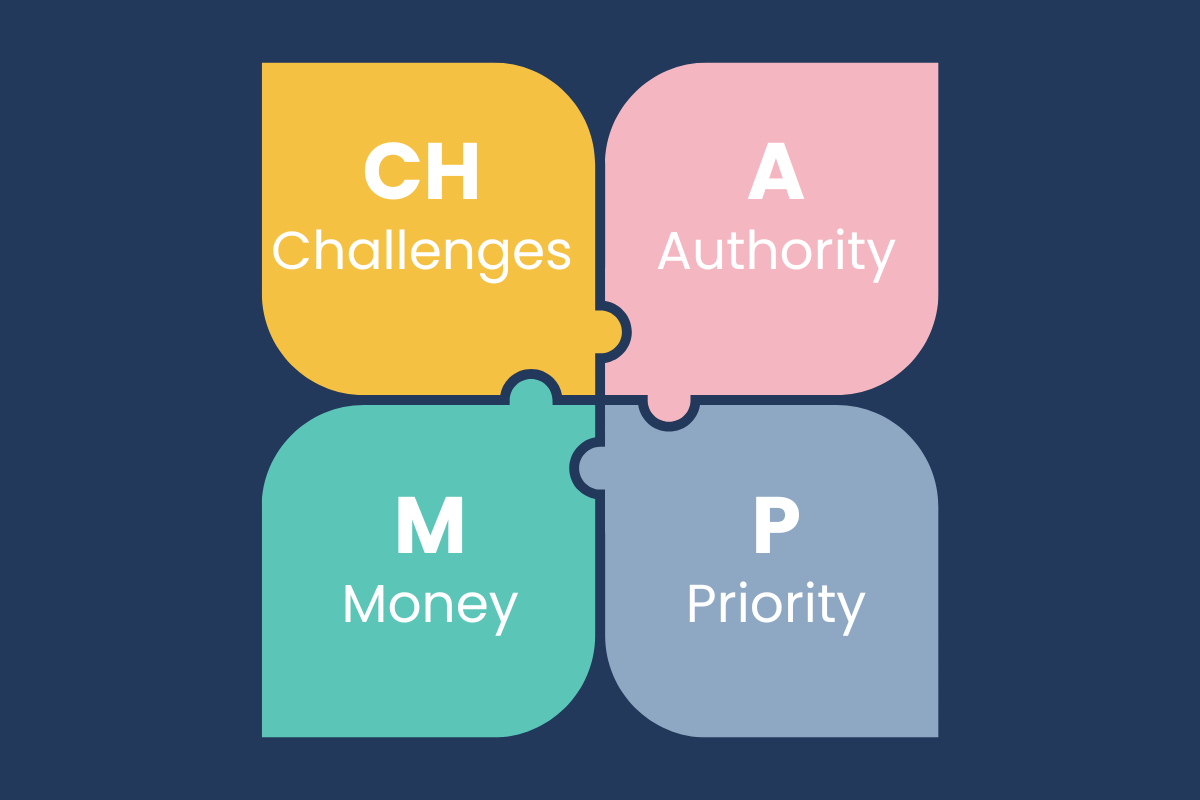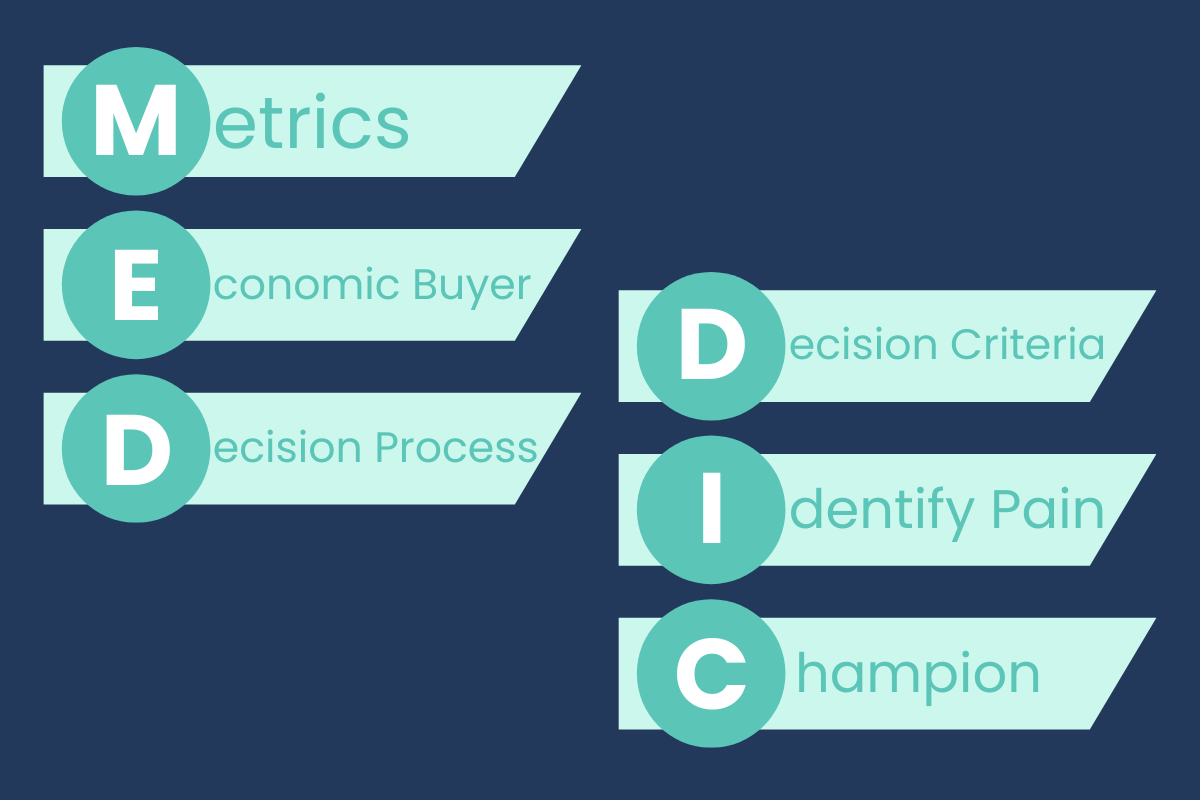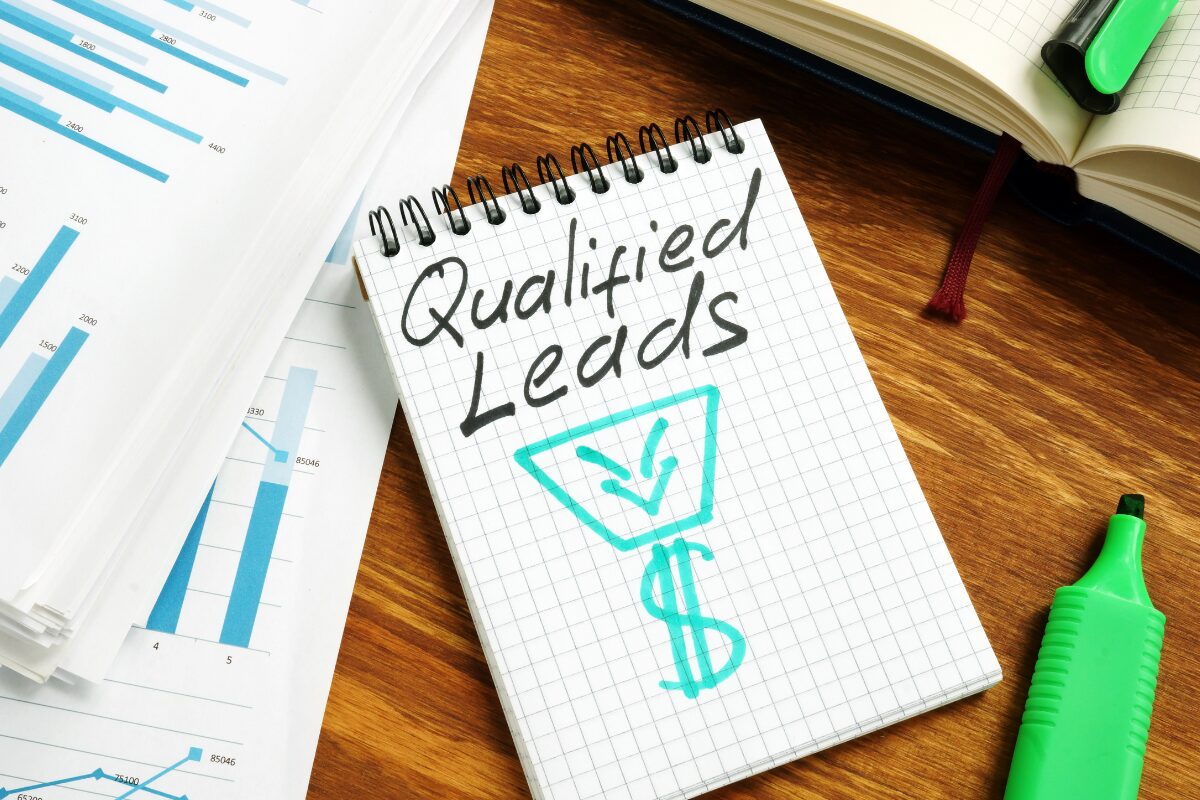Qualifying B2B leads before handing them off to sales professionals help you identify potential clients who are likely to buy your product or service. The process saves time and resources by focusing on the most promising prospects. In this article, you’ll learn effective B2B lead qualification methods, key criteria to consider, and important frameworks to enhance lead conversions.
Key Takeaways
- B2B lead qualification is crucial for identifying high-value prospects in the sales pipeline. It saves time and improves sales success.
- Understanding the difference between Marketing Qualified Leads (MQLs) and Sales Qualified Leads (SQLs) helps tailor sales efforts effectively.
- Utilizing frameworks like BANT, CHAMP, and MEDDIC can streamline the qualification process and enhance conversion chances.
Understanding Lead Qualification

B2B Lead qualification involves assessing if potential customers discovered through your lead generation process align well with your product or service. This step is akin to matchmaking in the business world—identifying prospects whose needs match your offerings and financial capabilities.
The primary purpose of qualifying leads is to identify and prioritize prospects who are most likely to become clients. Focusing on high-value leads improves sales success, saving time and resources by directing sales towards promising prospects instead of non-viable ones. This is especially important in the B2B world, where the entire lead qualification process is much longer and thus more costly.
Complete data profiles gathered during the lead qualification process help personalize the sales approach and enhance conversion chances.
Sales and Marketing Roles
Various B2B roles are involved in the sales conversation. First, the marketing team works to attract the right leads. While they focus on ads and platforms that should attract the best product qualified leads, plenty of non-qualified leads usually come in too.
Once the leads arrive, dedicated sales team employees generally take over. They research the lead while following a lead scoring process. Their fit as a good sales lead and potential client is determined as soon as possible.
Finally, other dedicated sales team individuals contact potential clients with their best sales pitch. In B2B sales, this pitch is generally months long. The larger the monetary amount of the sale, the longer it usually takes to close the deal.
Sales qualification roles may be different depending on the company and size of the team. Some companies choose marketing personnel to qualify the lead before handing it over to sales, rather than charging sales with the responsibility. In smaller organizations, one or two employees may do all three jobs. Regardless of how things are structured, B2B sales and marketing roles can be high paying careers that can be very rewarding for the right individual.
The Importance of Qualifying Leads

Imagine pouring your resources into a slow-growing garden where numerous seeds take root, but the majority of the plants die before reaching maturity. That’s what happens without effective B2B lead qualification. Instead of pouring resources into a pool of every possible lead, companies can minimize costs by targeting B2B leads with a high likelihood of conversion. A structured lead qualification process can notably enhance conversion rates and reduce wasted resources.
Enhancing Collaboration
Identifying ideal leads through lead qualification also enhances collaboration between marketing and sales departments. Proper lead qualification saves time and resources, increases efficiency, improves closing rates, and boosts conversions and revenue.
Lead qualification, by concentrating on potential clients likely to convert, establishes itself as a vital step in the sales process.
Key Criteria for Lead Qualification
Determining if a lead is worth pursuing involves asking numerous, specific questions during the qualification process. Key factors in determining if a lead is qualified include:
- Product Need: Does the prospect’s need align with your product’s capabilities?
- Affordability: Can they afford your solution?
Grasping the ideal B2B customer profile and product suitability is also essential. Assess the worthiness of leads by inquiring about:
- Company Industry
- Company Size
- Decision-making roles and purchasing authority
- Pain points
- Budget
- Previous problem-solving attempts
If a lead cannot set a budget, defining costs and demonstrating the solution’s ROI can be effective.
Focusing on these key criteria allows for pre qualifying a lead and minimizes time spent on unqualified ones. This approach acts like a lead qualification checklist, ensuring the right prospects are targeted from the beginning.
The Two Types of B2B Leads
In the B2B world, leads are typically categorized into two main types: Marketing Qualified Leads (MQLs) and Sales Qualified Leads (SQLs). Both are important in the sales qualification process.
MQLs – Marketing Qualified Leads
MQLs demonstrate interest in a company through actions like downloading resources or subscribing to newsletters, but the prospect may not yet be ready to purchase. Engagement with MQLs often focuses on providing educational content to help them progress down the sales funnel.
SQLs – Sales Qualified Leads
SQLs, on the other hand, are MQLs that have shown a higher intent to buy. This is often signaled by direct engagement with the sales team. A sales qualified lead should be prioritized because it represents someone with purchase decision authority. It is one that is more likely to convert into a closed deal due to the direct conversations with a sales rep and their expressed needs for your product or service.
Recognizing the difference between MQLs and SQLs is vital for effectively tailoring your lead generation and sales efforts.
Popular Lead Qualification Frameworks
Lead qualification frameworks are designed to eliminate challenges in the qualification process and convert cold leads into qualified ones. There are various types of frameworks, including manual, automated, and machine learning-based systems.
Choosing a B2B lead qualification framework involves considering factors like product complexity, sales cycle length, lead expectations, and generation goals.
BANT Framework

The BANT framework, created by IBM in the 1950s, emphasizes the importance of budget as a key qualification criterion. It assesses Budget, Authority, Need, and Timing during the lead qualification process. Using the BANT framework aims to identify leads likely to convert, shorten the sales cycle, and reduce wasted resources.
BANT helps sales teams prioritize activities and concentrate on high-potential leads. While it simplifies lead qualification, it may inadvertently disqualify potentially valuable prospects. Sales teams should be careful about how they frame questions to avoid coming off as aggressive.
CHAMP Framework

The CHAMP framework prioritizes understanding the lead’s challenges to better address their needs. Ensuring you communicate with the right person is essential for effective lead qualification in this framework. The ‘Money’ aspect relates to the budget and expected return on investment, while ‘Priority’ indicates how the lead prioritizes your solution among alternatives.
The CHAMP framework, by focusing on these elements, helps sales teams align their approach with the lead’s challenges and priorities, enhancing conversion chances.
MEDDIC Framework

The MEDDIC framework is designed to identify factors influencing purchase decisions and qualifies leads for complex sales processes. MEDDIC is an acronym that represents Metrics, Economic Buyer, Decision Criteria, Decision Process, Identify Pain, and Champion. Each of these components plays a crucial role in the sales process. Developed in the 1990s, this framework focuses on multiple factors that influence purchasing decisions.
The MEDDIC framework collects quality customer data and offers guidance throughout the sales process. Sales reps can tailor their messaging by assessing key elements of the buying process and identifying potential roadblocks.
Due to its complexity, this framework requires a deep understanding the ideal customer and effective data organization. It is most popular for use in nurturing enterprise organizations.
Steps to Qualify a B2B Lead Effectively

Effective B2B lead qualification involves several key actions that align with its principles. These steps assist in understanding customer pain points, scoring leads, and ensuring a smooth sales cycle.
Research Every Lead
Learning about your B2B prospects is the initial step to qualify leads. Researching potential customers builds a comprehensive picture of their needs and pain points. Sales teams can gather leads using tools like LinkedIn, social media, online databases, CRMs, and data enrichment tools. Effective research provides valuable insights into industry pain points, competitor affiliations, and a lead’s authority.
Regularly updating client information and gathering data from multiple sources ensures complete and more accurate data profiles. For example, LinkedIn profiles offer valuable information such as a lead’s job title, company size, and their own marketing efforts.
Facebook, on the other hand, might concentrate on ambitions, hobbies, and concerns. This thorough research process aids in targeting the right leads from the beginning and providing information to help nurture them.
Ask the Right Questions
Crafting the right questions can accelerate the B2B sales cycle by quickly identifying truly viable leads. Key questions to ask during the B2B qualification process include those that help answer several questions:
- Pain point(s). What problem does the business need to solve, and does your product or service help them solve it?
- Contacts. Who are the decision maker(s)?
- Affordability. How large is the prospective company? Depending on the industry, this can be determined by number of employees, annual revenue, or other indications.
- Vendor Qualification. What is their sales process in acquiring a new product or service?
- Competition. What other solutions are they considering?
- Timeframe. Urgency, implementation schedule, future expansion.
In B2B sales, building rapport is essential to obtain the answers in your vetting process. This may involve several different contact points to assess whether your solution is truly the best choice for the potential customer.
Score Your Leads
B2B scoring and lead qualification systems prioritize leads by assessing engagement levels and likelihood of conversion based on specific criteria. Both demographic and behavioral data should be considered in lead scoring criteria. These factors are essential for effective assessment. High conversion rates indicate high-quality leads.
Contact scoring software scores each lead and provides a value estimate as a prospect. CRM users can set custom parameters for scoring criteria, ensuring the lead scoring system remains adaptable.
Utilizing Marketing Automation for B2B Lead Qualification
Automating B2B lead qualification enhances efficiency, allowing sales teams to focus on high-value leads. Clear criteria for what defines a qualified lead must be established before automating the qualification process to qualify sales leads.
Dynamic content and personalized messaging are vital for effectively nurturing leads through automation. A/B testing can identify which communication strategies yield better engagement and conversions from leads.
Regular testing and refinement of marketing automation strategies align with business goals and improve lead qualification outcomes. CRM integration streamlines the sales process, centralizes lead data, and enables personalized follow-ups.
Lead Scoring vs. Lead Qualification
Lead scoring assigns numerical values to leads based on their level of interest. Marketers use lead scoring to automate lead assignment based on interest levels. Lead qualification, on the other hand, assesses whether a lead fits the company’s criteria, focusing on its readiness to make a purchase.
Both processes work together to optimize the sales process, allowing teams to focus on high-potential leads. While lead scoring categorizes prospects based on predefined criteria, lead qualification ensures they are ready to move further down the sales funnel.
Common Mistakes in Lead Qualification
B2B sales qualification frameworks effectively help in qualifying and disqualifying prospects during the early sales process. Human oversite is still required. Relying solely on demographic data for qualification can result in missing out on leads with genuine interest. Failing to nurture leads who are not ready to buy can hinder potential sales opportunities.
Ignoring, or not recognizing lead behavior can lead to missed insights about a lead’s level of engagement and intent. A lack of follow-up can cause leads to lose interest or turn to competitors.
Lack of good internal communication can lead to mistakes in B2B lead qualification. While automated systems often help alleviate duplication of effort issues, it still happens. Claiming ownership and communicating lead qualification efforts within the team is essential to prevent internal misunderstandings.
Lack of communication can also affect the perceptions of the potential client. They may feel bombarded with communication attempts from more than one person in the same company, who use different methods to get their attention (email, phone, etc.). The receiver may also perceive a lack of organization within your company as a result of this seemingly poor coordination of effort.
Receiving too many ‘dead end’ prospects indicates an issue with the sales team. This suggests that the qualification framework may not be stringent enough.
Signs of an Unqualified Lead
Unqualified leads may lack a need for your product, a budget, or belong to an unsuitable industry. They often display little to no engagement with your offerings, showing a lack of interest or responsiveness. A lead remaining in the awareness phase for an extended period suggests they are not ready to make a decision.
Low scores based on interactions typically indicate a weak intent to commit to a buying decision. Inadequate or incorrect contact information from a lead indicates they are unqualified. A potential client that avoids involvement of key decision-makers may imply they are not fully committed to the buying process. It is important to weed out unqualified leads so your sales team doesn’t waste time and effort on them.
Summary
Summing up, effective B2B lead qualification is the backbone of a successful sales strategy. By understanding the nuances of lead qualification, implementing robust frameworks, and leveraging automation, you can streamline your sales process and focus on high-value prospects. Remember, the goal is to identify and prioritize leads that are most likely to convert, saving time and resources in the long run.
Inspire your sales and marketing teams to collaborate and refine their lead qualification efforts continuously. By doing so, you’ll not only improve your conversion rates but also enhance overall customer satisfaction. Ready to transform your B2B lead qualification process? Start implementing a B2B lead qualification practice today and watch your sales soar.
